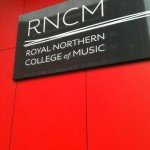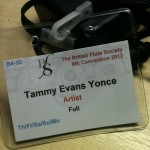Trying to prepare for a recital can be an overwhelming process. Whether you are a student planning a junior or senior recital or a professional who is trying to balance recital preparation with other duties, careful planning will ensure that the event goes smoothly.
First, it’s important to choose your program carefully. I usually have a backlog of music I would like to perform. I try to come up with a program that is balanced and includes a lot of variety. Even though I primarily focus on new music lately, I am aware of my audience and also include some of the older standard works. I also try not to neglect works written for interesting instrumental combinations when the players are available. For the recital I most recently presented, I included J.S. Bach, a French work, and a lot of new music. Of the new works, there is still considerable variety. One is for solo flute, two include digital audio sounds, one is for flute and clarinet, and another is for alto flute.
Some music has been on my stand for many months because I knew I would plan to program it on my next recital. Some of it is newly chosen, and I haven’t been working on it as long. As my recital approaches, I begin to keep a list of the entire program and put each work into one of these categories: almost performance ready but just needs polishing, really needs technical work, and ready to go. Then I determine a practice schedule based on that list. I continue to work on the pieces that are nearly ready but I spend much less time on them. The other works get more focused, intense practice like I describe here.
Lately, I have preferred to have most of my music learned and some kind of idea of how I want it to sound before I start collaborating with chamber music partners. While I keep an open mind, it seems to result in a stronger performance if we aren’t trying to make every musical decision as we go.
For students, I help them come up with a similar schedule to that outlined above, but we are more specific as to when and how often the student should practice each work and even each section of each work. Based on where they are with the music, we might come up with a schedule that includes the best-prepared works being heard in lessons every 2 or 3 weeks. The works that are nearly ready but need polishing might be heard every week but only those specific spots. The music that requires the most technical work will definitely get the most focus, including more intense lesson time. And as we approach the recital date, students will begin to play entire works in lessons, so they get the feel of what it’s like to play the entire program at one time. By making a specific schedule, this helps the student feel like there is a manageable plan between preparation and performance.
Teaching musical style can be tricky and obviously is a much longer process. I try to expose the student to various styles through demonstration and quality recordings; this is ongoing work, regardless of whether or not there is a recital on the horizon. Then when the student approaches a piece, we will have spent a little time with that particular style and it won’t be a brand new concept.
As with most things, careful preparation is important. Instead of forging ahead with no clear plan, a detailed approach will more likely result in a successful, confident performance.

![IMG_0631[1]](https://www.tammyevansflute.com/wp-content/uploads/2013/01/IMG_06311-150x150.jpg)
![IMG_0628[1]](https://www.tammyevansflute.com/wp-content/uploads/2013/01/IMG_06281-150x150.jpg)
![IMG_0607[1]](https://www.tammyevansflute.com/wp-content/uploads/2012/12/IMG_06071-300x300.jpg)


